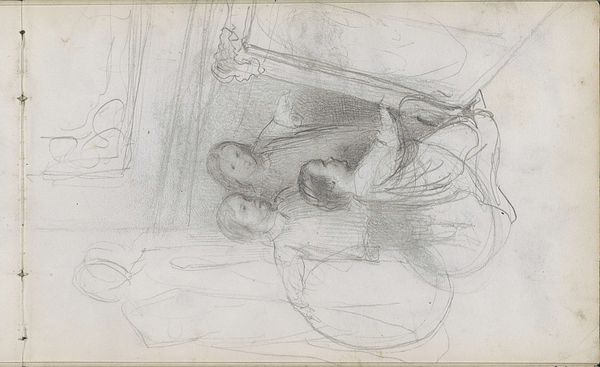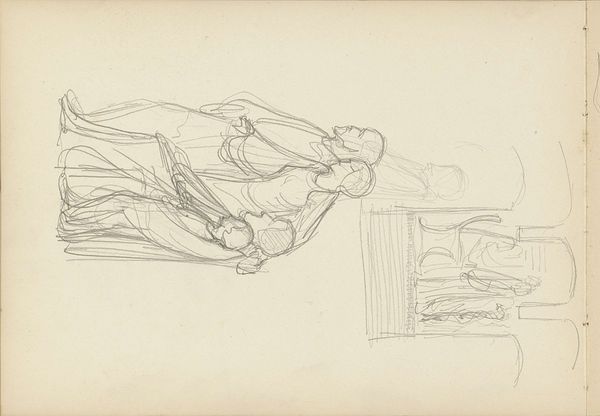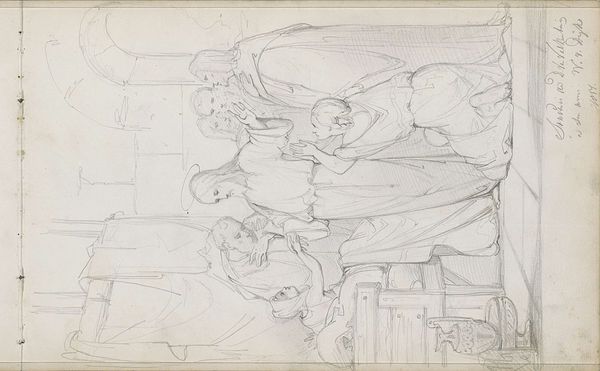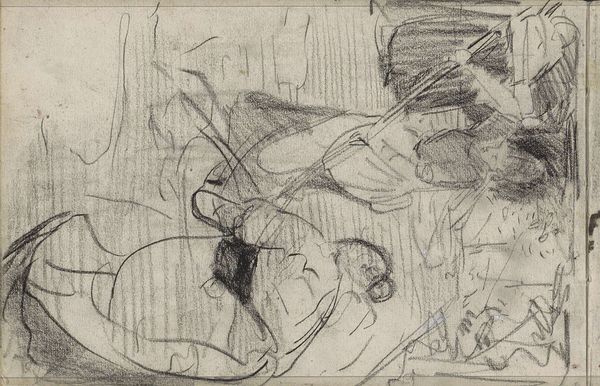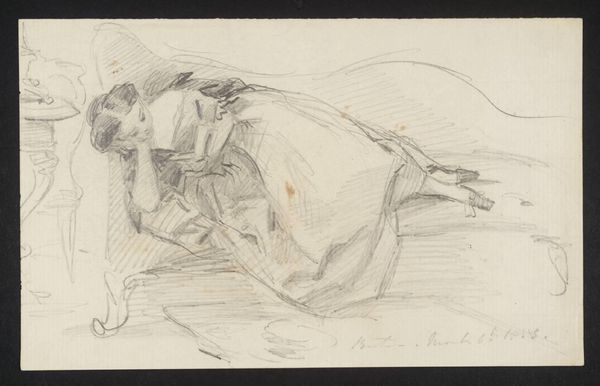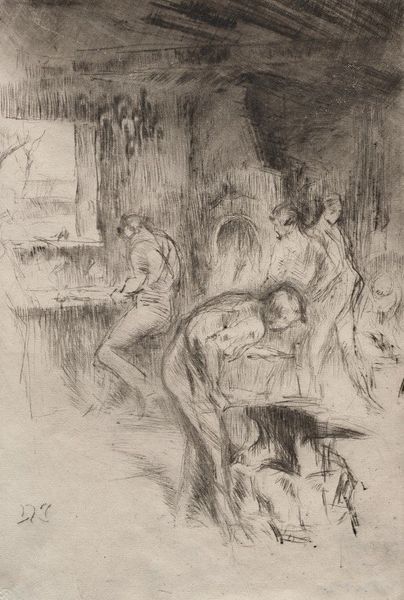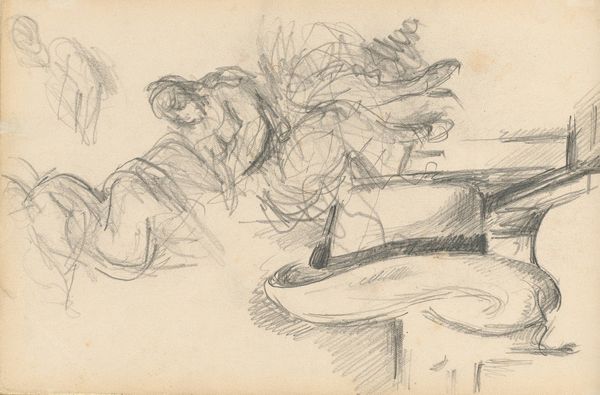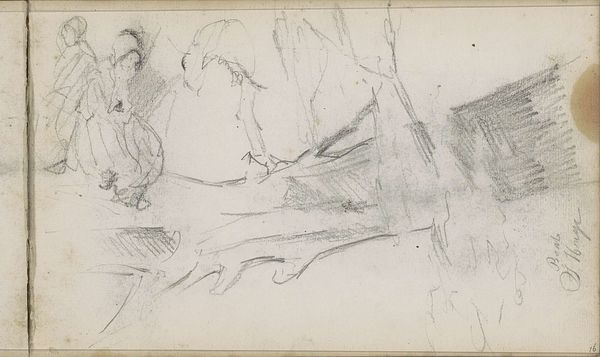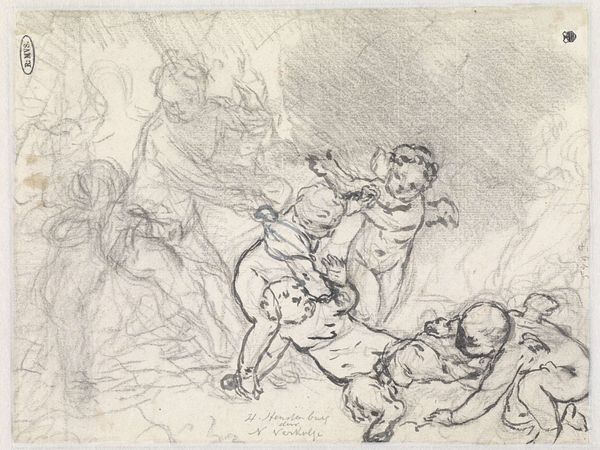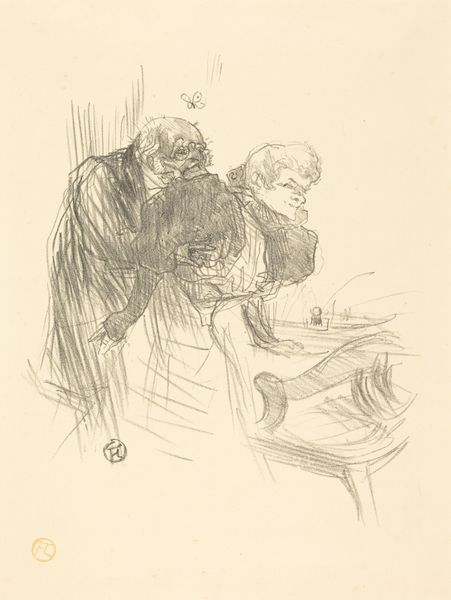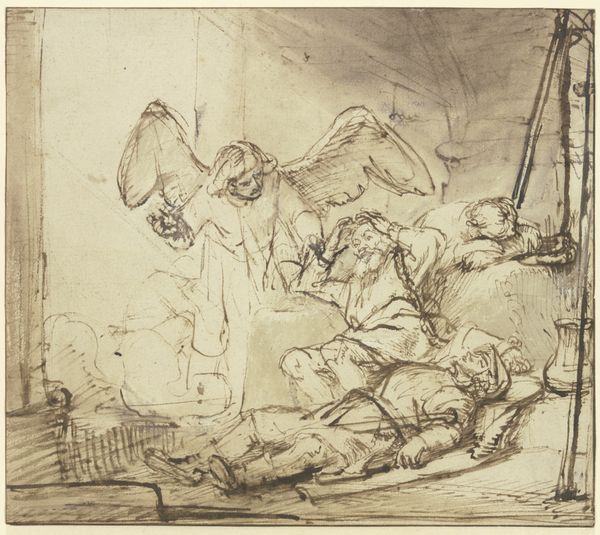
drawing, paper, pencil
#
portrait
#
drawing
#
pencil sketch
#
figuration
#
paper
#
pencil
#
genre-painting
Copyright: Rijks Museum: Open Domain
Editor: So this is "Organist met toehoorders," or "Organist with Listeners," a pencil drawing on paper from around 1858 by Bastiaan de Poorter, currently held in the Rijksmuseum. The sketchiness gives it a sense of immediacy, but it’s also quite haunting. What are your initial thoughts on it? Curator: It strikes me as a glimpse into 19th-century social dynamics and the role of music within those structures. The implied power dynamic, with the organist performing and the audience passively listening, begs the question: who had access to culture, and who was being excluded or marginalized in those spaces? Editor: That's an interesting angle. I hadn't really considered the social stratification. The figures seem somewhat anonymous. Is there a particular reason why de Poorter would've obscured their identities? Curator: I think the sketch-like quality adds to this feeling. But what do you see in the organist’s posture? Is there a sense of labor, pride, perhaps even performance anxiety? Also, look at how the audience is arranged - heads stacked one above the other. This could highlight a hierarchical social structure that permeated life, including musical events, back then. What's missing here, or who is missing from the picture? Editor: Now that you point it out, I'm aware that the drawing centres entirely around privileged members of society; people without access to cultural events or the means to appreciate such gatherings. And thinking about it critically, maybe the sketchiness reflects how certain members of society didn't matter. Curator: Exactly! Considering that De Poorter created this piece, a sketch without much definition of characters, it offers a rich space for our reflection, about the way we consume and perceive culture today, but also in past social structures. Editor: That's given me a lot to think about. It’s made me realise how even seemingly simple sketches can reflect the broader social and political context of the time. Curator: And hopefully, it sparks reflection in yourself about identity, exclusion, and cultural consumption!
Comments
No comments
Be the first to comment and join the conversation on the ultimate creative platform.
